
8th ISAG (18)
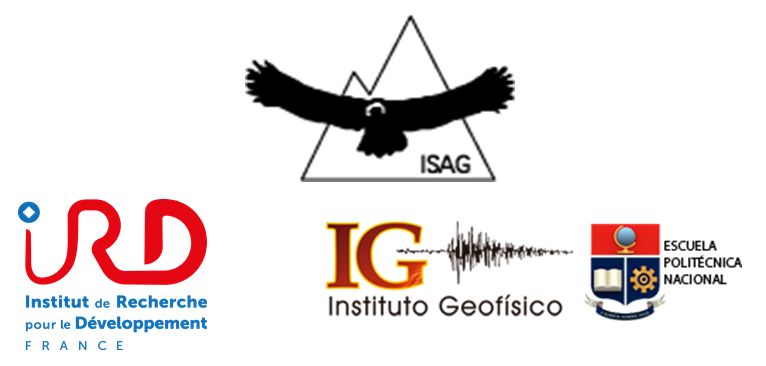
8th International Symposium on
Andean Geodynamics (ISAG)
UPDATE! - Programme
You can download the up-to-date programme here.
The +6000 km-long Andean Cordillera represents a unique natural laboratory for studying the geological and geodynamical process associated with the construction and development of a continental mountain range. A decade after the last ISAG in Nice, we have decided to revive this unique symposium on Andean geology and geodynamics but also its related economical and social issues. Because these topics are of major importance for Andean countries, the 8th International Symposium on Andean Geodynamics (ISAG) will be held in Quito, Ecuador on September 24-26th, 2019.
The next ISAG is being organized by the Instituto Geofísico, Escuela Politécnica Nacional (IG-EPN) of Quito (Ecuador) and the French Institut de Recherche pour le Développement (IRD), and will be held on the Hotel Mercure Alameda Quito, the official hotel for the ISAG.
We expect that ~250 earth scientists will attend the conference. Given the number of submitted abstracts and the current level of registrations, we are confident that this symposium will be an exciting forum for scientific exchange between Earth scientists from South America, Europe, and North America.
Conference languages
For both, oral and poster sessions, the preferred language is English, although Spanish or French are also accepted. However, there will be no facilities for simultaneous translation.
Registration
In order to attend the 8th ISAG you should register as soon as possible by filling the following form: Registration Form.
Field trips
The organizing committee is planning some field trips in the region. All the information is in this page.
Correspondence and enquiries
Please send a message to Esta dirección de correo electrónico está siendo protegida contra los robots de spam. Necesita tener JavaScript habilitado para poder verlo. or contact the local organizers.
With the academic and financial support of:
 |
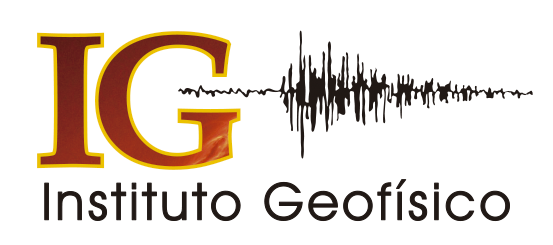 |
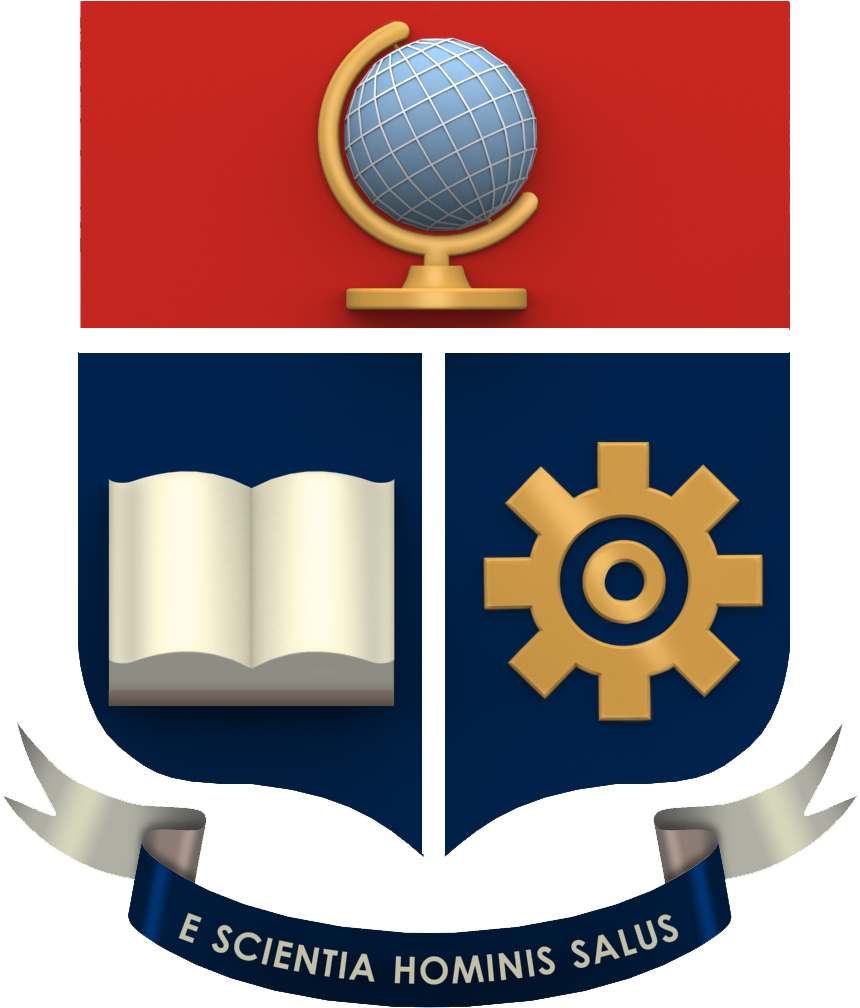 |
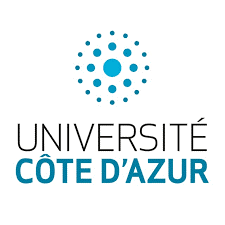 |
 |
 |
With the financial support of:
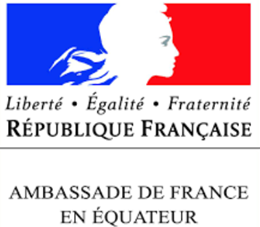 |
||
 |
 |
|
 |
 |
|
 |
 |
|
Scientific Themes
We especially encourage contributions addressing the following topics:
(1) Mechanisms and processes of crustal thickening, uplift and deformation
(2) Modern and ancient volcanism and magmatism
(3) Interactions between climate, surface and lithospheric processes
(4) The seismic cycle and active deformation
(5) Sedimentary basins and petroleum geology
(6) Andean geological resources, mineral deposits and geothermal resources
(7) Geological hazard and risk, with emphasis on seismic, volcanic, and gravitational phe nomena
Abstracts
Each participant will be allowed one oral contribution as first author. Communications must be written in English and should be 1 page-long, including text and references. Abstracts should be submitted before May 15th 2019. In order to submit an Abstract, you should register to the conference by filling the corresponding Registration Form, and then you will receive a confirmation email with a link for submit your Abstract(s). If you wish to submit more than one Abstract, please use the same provided link.
Oral and poster presentations
Talks will last 12 minutes each, and will be followed by 3 minutes of discussion. For oral and poster sessions, the preferred language is English, although Spanish is also accepted. However, there will be no facilities for simultaneous translation. There will be a poster session each day (from 16h30 until 18h00). Posters will remain on display all day long. Maximum dimensions for posters are 80 cm in width (horizontal) and 110 cm in height (vertical).
El ISAG es un congreso que abarca todos los ámbitos de la geodinámica andina. Este congreso cuenta con la participación de investigadores, profesionales y estudiantes, con ponencias de alto nivel. Al ser un congreso internacional, los participantes vienen no sólo de América Latina, sino del mundo entero. Este congreso es una excelente oportunidad para presentar a su empresa. Nuestros Auspiciantes obtienen los beneficios para la presencia de su empresa, especialmente diseñados para esta edición.
Existen las siguientes categorías de auspicio:
ORO (US $5000)
- PRESENCIA DE MARCA
La empresa puede ubicar un banner de la empresa en la sala de conferencia. - PIEZAS GRÁFICAS
Logotipo de su empresa en conjunto por categoría en: programa de mano, plano de sede, gigantografía, folletos, roll screen. - PRESENCIA EN SITIO WEB
Logotipo haciendo link a la web de su empresa. - PRESENCIA EN REDES SOCIALES y BOLETINES ELECTRÓNICOS
A través de Facebook y correo masivo. - OTROS BENEFICIOS
Derecho a la instalación de un stand permanente en ubicación preferencial durante todo el congreso.
Instalación de material promocional de su empresa en el Maletín del participante al congreso (1 unidad).
10 inscripciones full pass al congreso.
PLATA (US $3000)
- PRESENCIA DE MARCA
La empresa puede ubicar un banner de la empresa en la sala de conferencia. - PIEZAS GRÁFICAS
Logotipo de su empresa en conjunto por categoría en: programa de mano, plano de sede, gigantografía, folletos, roll screen. - PRESENCIA EN SITIO WEB
Logotipo haciendo link a la web de su empresa. - PRESENCIA EN REDES SOCIALES y BOLETINES ELECTRÓNICOS
A través de Facebook y correo masivo. - OTROS BENEFICIOS
Derecho a la instalación de un stand permanente durante todo el congreso.
Inclusión de material promocional de su empresa en el Maletín del participante al congreso (1 unidad).
6 inscripciones full pass al congreso.
BRONCE (US $1000)
- PIEZAS GRÁFICAS
Logotipo de su empresa en conjunto por categoría en: programa de mano, plano de sede, gigantografía , folletos, roll screen. - PRESENCIA EN SITIO WEB
Logotipo haciendo link a la web de su empresa. - PRESENCIA EN REDES SOCIALES y BOLETINES ELECTRÓNICOS
A través de Facebook y correo masivo. - OTROS BENEFICIOS
Derecho a la instalación de un stand permanente durante todo el congreso.
Inclusión de material promocional de su empresa en el Maletín del participante al congreso (1 unidad).
2 inscripciones full pass al congreso.
OTROS
- COCKTAIL DE BIENVENIDA o COCKTAIL DE CLAUSURA (500 USD)
La empresa puede ubicar su roll up en la sala del cocktail.
La empresa puede distribuir material pubicitario al ingreso al evento.
Logotipo de su empresa en boletín electrónico, programa de mano, gigantografía, roll screen y en el sitio web del evento, haciendo link a la web de su empresa.
1 inscripción full pass al congreso.
Para obtenter mayor información, contactarse con la dirección Esta dirección de correo electrónico está siendo protegida contra los robots de spam. Necesita tener JavaScript habilitado para poder verlo..
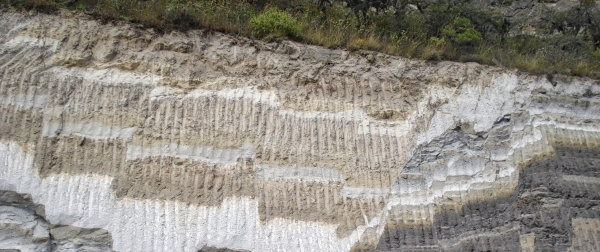
The vertical movements of the coastal domain of Ecuador over different time scales
(Manta Peninsula and Isla de la Plata area)
Leaders: M Saillard, F. Michaud, P. Reyes, A. Cabero, Y. Font, M. Régnier, J.N. Proust, A. Cisneros, M.J. Hernandez (Géoazur and DG-EPN)
Dates: September 20th to 23th, 2019 (*)
(*) Due to flight’s reservations, we need people to sign up for this fieldtrip before June 3rd
Approx. cost: $ 680 This price includes hotel night in the 19th, air ticket to and from Manta, and boat tickets to and from the Isla de la Plata. This price does not include dinners.
Minimum number of participants: 15
Maximum number of participants: 30
Tectonic deformations, and in particular vertical movements, recorded by the coastal domain above the Ecuadorian subduction zone reflect a complex geological history. These vertical movements can be quantified at different time scales, at the short-term from the scale of the seismic cycle to many cumulated cycles (100 ka) to the long-term (Ma) by combining tectonic markers. In this fieldtrip, we propose to explore vertical movements through morpho-tectonic markers of coastal uplift (uplifted marine terraces) and sedimentary and stratigraphic markers of formation of the Coastal Cordillera (evolution of forearc basins). This fieldtrip will focus on Manta Peninsula and La Plata Island. The observed markers will be placed in their seismic, tectonic and geological context.
Please note that this fieldtrip will be done in spanish.
Cotopaxi Volcano: rhyolites to andesites from 0.5 Ma to the present
Leaders: P. Mothes and M.L. Hall (IGEPN)
Dates: September 21th and 22th, 2019
Departure: September 21th at 08:00.
Field Trip nights included: September 21th
Notes: Nights of September 20th and 22th are included at the Mercure hotel (shared basis)
If you are interested in participate in this fieldtrip, please contact our logistical team at Esta dirección de correo electrónico está siendo protegida contra los robots de spam. Necesita tener JavaScript habilitado para poder verlo.
Cotopaxi volcano is one of the most active and iconic stratovolcanoes of the Ecuadorian Andes. Its history covers more than 0.5 Ma and includes the rhyolitic explosive deposits of its Pleistocene volcanic history, including the (~200 ka, 100 km3 ) Chalupas ignimbrite. During this fieldtrip, we will also observe the eruptive products of the last 7000 ka, that includes rhyolitic tephra fallout and pyroclastic flow deposits, debris avalanche and lahar deposits, and the historical scoria flows and debris flows deposits.
Major active faults and historic earthquake surface ruptures in Central Ecuador
Leaders: S. Baize (IRSN), L. Audin (IRD), A. Alvarado (IG-EPN) and H. Jomard (IRSN)
Dates: September 20th to 23th, 2019
Departure: September 20th at 07:30.
Field Trip nights included: September 20th, 21th & 22th
Notes: Night of Sept. 19 is included at the Mercure hotel (shared basis)
If you are interested in participate in this fieldtrip, please contact our logistical team at Esta dirección de correo electrónico está siendo protegida contra los robots de spam. Necesita tener JavaScript habilitado para poder verlo.
The Chingual-Cosanga-Pallatanga-Puna fault system is a major tectonic feature of the northern Andes, which accommodates the relative displacement (8 mm/a) between the North Andean Sliver and the South America Plate (Alvarado et al., 2016). The fault system imprints are strikingly similar to those of other major continental fault zones in the world. It includes a series of parallel or branching active fault strands, which historical activity is suggested by major and damaging earthquakes since at least the 17th century (Yepes et al., 2016).
During this 4-days field trip, we plan to present, among other short stops, the most prominent geomorphological and geological evidences of fault activity along this system, including surface ruptures associated with moderate and large magnitude earthquakes. We will have a look at Quito fault zone (Alvarado et al., 2014), then drive to the south in order to get an overview of recently studied active faults. We will have a look at the Pallatanga fault in Rumipamba where the first trenches in Ecuador were performed to find back the source of 1797 M7.5+ Riobamba earthquake (Baize et al; 2015) and drive uphill to the Pisayambo Laguna area where a M5 earthquake ruptured the fault system up to the surface (Champenois et al., 2017). We will also make a detour to the Igualata volcano summit (4500m) to observe a surface rupture, which is probably associated with the major Riobamba earthquake (Baize et al., in prep).
The geology of the Ecuadorian Eastern Cordillera
Leaders: R.A. Spikings (U. Genève), B. Beate (DG-EPN)
Dates: September 20th to 23th, 2019
Departure: September 20th at 07:00.
Field Trip nights included: September 20th, 21th & 22th
Notes: Night of September 19th is included at the Mercure hotel (shared basis)
If you are interested in participate in this fieldtrip, please contact our logistical team at Esta dirección de correo electrónico está siendo protegida contra los robots de spam. Necesita tener JavaScript habilitado para poder verlo.
The Eastern Cordillera of Ecuador is an Andean trending magmatic and metamorphic belt that exposes rocks spanning from the Palaeozoic basement to the modern active arc, and records the early disassembly of Pangaea in the Triassic, subsequent prolonged Jurassic - Early Cretaceous active margin magmatism during hyper-extension, and the collision and accretion of the Caribbean Large Igneous Province in the late Cretaceous. The field trip plans to make the following stops: (1) Ammonite bearing quartzites and slates of the Chaucha Block, which is considered to be para-autochthonous continental crust that rifted from South America during Early Cretaceous hyper-extension (stop close to the town of Alausi); (2) The Peltetec sequence, which is a tectonic melange that hosts ultra-mafic and mafic lithologies, which range in age from Neoproterozoic to Early Cretaceous, and is considered to have formed during the closure of an Early Cretaceous basin that was floored by a transitional mafic crust; (3) Tungurahua Volcano, which is part of the modern arc and has been continually erupting since 1999 until the mid-2016; (4) A west-to-east traverse across the Cordillera, where we will cross Triassic anatectites that formed during a rift-to-drift transition, and Jurassic-Early Cretaceous arc rocks that formed in a prevailing extensional setting.
The Oligocene – Miocene volcanic province of Southern Ecuador
Leader: M. Mulas (ESPOL)
Dates: September 20th to 23th, 2019 (*)
(*) Due to flight’s reservations, we need people to sign up for this fieldtrip before June 3rd
Approx. cost: $ 600.
Minimum number of participants: 15
Maximum number of participants: 35
The southern sector of Ecuador (between 2°S and 6°S) has been characterized by intense magmatic activity in the period comprised between Oligocene and Miocene (Hungerbuhler et al. 2002). The volcanic sequence in the Pucará-Santa Isabel sector is composed by the Saraguro Fm. (26-21 Ma) followed by the St. Isabel Fm. (18 – 7.6 Ma) and closed by the Tarqui Fm. (6.3 Ma). These volcanic formations, made principally of welded ignimbrites, show large lithofacies variability (boulder size to lapilli size lithics, crystal rich to fiamme-rich ignimbrites) that reflects different PDC run-out and principally different sources. Stratigraphic and geomorphologic constraints allow to locate calderas structures (mean diameter 13 x 7-km) related with the Jubones and Santa Isabel ignimbritic eruptions.
Cretaceous Geology and Metallogeny of Southern Ecuador
Leaders: O. Poma (Cornerstone Ecuador S.A.), Arturo Egüez (DG-EPN)
Dates: September 27th to 30th, 2019 (*)
(*) Due to flight’s reservations, we need people to sign up for this fieldtrip before June 3rd.
NOTE: If you want to participate in this fieldtrip and in a pre-conference field trip, please contact the organizing commitee.
Approx. cost: $660
Minimum number of participants: 15
Maximum number of participants: 20
The cretaceous Alamor-Lancones basin is located into the Huacabamba deflection, a geographic region which represents the transition between Central to Northern Andes, where the Cordillera change from NW to NE trend. The basin is limited by Triassic metamorphic blocks, the Amotape-Tahuin to the northwest and the Loja Terrane to the Southeast.
The Alamor-Lancones basin can be divided into a northwestern quartz-rich domain and a southeastern volcaniclastic domain (Jaillard et al, 1999). The earliest volcanism accompanying rifting is dominated by basaltic pillow lavas and breccias with related VMS deposits formed between 104 to 100 Ma. A second phase of felsic-rich volcanism with ages of 99 to 91 Ma intercalated and overlain by siliciclastic and carbonate sedimentary sequences in northwestern section of the basin (Winter, 2008), at this time the Bramaderos porphyry was deposited (Schutte, 2010) and possible related epithermal vein systems at its borders.
The aim of the field trip is go through the basin from the northwest area in the contact between metamorphic rocks and overlain sedimentary western domain toward the southeastern domain where dominated volcanism with porphyry and epithermal deposits are present on the upper sequences and ending in the lower basaltic sequences.
Field Trips
Different groups working in Ecuador proposed several pre-symposium fieldtrips. The logistics of these fieldtrips is being assured by our local logistics team following the requests from each field-trip leader. We should stress that the scientific part of these fieldtrips is also under the responsibility of the fieldtrip leaders.
The cost of each field trip includes bus and/or air transport, lodging in double occupancy rooms, breakfast, box-lunch, and field guides. These prices do not include dinners. All taxes are included. Given that there are logistic limitations, the number of participants will be restricted.
Field trips will start from the official Hotel Mercure. Please be ready to go 20 minutes before departure time.
Note: Participants are advised that we will be at high elevations, up to 4500 m above sea level (asl). Please be sure that your health is compatible with being at these altitudes. Above 3000 m asl, temperatures will generally be between 5 – 20°C; driving rain and strong winds are possible. Sunscreen, hats, and adequate clothing are necessities. Water and lunch will be provided in the field. The organizing committee will not be responsible for any accidents that might occur during the trip. Participants are recommended to have their own health and travel insurance.
Más...
Setting and Weather conditions
Quito, located on the Ecuadorian Andes at 2800 meters in elevation, is blessed with a spring-like climate most of the year. September is usually sunny, but afternoon thunderstorms can happen. Daytime temperatures of 20-25ºC, and 10-20ºC during the night are expected. Participant should be aware with the high altitude of the Quito. Travellers to the Amazon basin or the Pacific coastal area are might be surprised by the warm, but not hot daytime temperatures (25-35ºC), thanks to the frequent cloud cover. It is recommended that everyone bring a rain/wind breaker for daily use, especially for those thinking to attend the fieldtrips.
Currency
The local currency in Ecuador is the US dollar. Many exchange houses exist in Quito and credit cards are accepted in ATM.
Transportation from the Airport
Participants with reservations at the proposed hotel (Hotel Mercure Alameda Quito) will benefit of free transportation from the airport (September 22th and 23th). Please contact the organizing committee until September 10th (Esta dirección de correo electrónico está siendo protegida contra los robots de spam. Necesita tener JavaScript habilitado para poder verlo.) in order to arrange this service. Otherwise, there are numerous taxis available at the airport. Quito facilities and most hotels sit roughly 45 minutes away from the airport (one way main rate of 25-30 USD).
Insurance
All medical attention in Ecuador is on a cash basis. You are encouraged to come to Ecuador with adequate insurance coverage. Participants who will be attending certain field trips should be aware of the high elevations that might be reached, and should take the necessary precautions.
Peter Molnar
Professor of geological sciences at University of Colorado, Boulder
His research focuses on how mountain ranges form and by studying the deformation of the continental lithosphere.
He was awarded by the prestigious Crafoord prize in 2014 "for his ground-breaking contribution to the understanding of global tectonics, in particular the deformation of continents and the structure and evolution of mountain ranges, as well as the impact of tectonic processes on ocean-atmosphere circulation and climate".
https://www.colorado.edu/geologicalsciences/peter-molnar
Suzanne M. Kay
Professor of geological sciences at Cornell University
Her research focuses on the applications of petrology and geochemistry to the origin and evolution of the continental crust, with particular emphasis on the relation of regional tectonics to magmatic processes at the Andean context.
She was recently awarded by distinguished career award from the Mineralogy, Geochemistry, Petrology, Volcanology division of the Geological Society of America.
https://www.eas.cornell.edu/faculty-directory/suzanne-mahlburg-kay
Víctor A. Ramos
Emeritus Professor at Universidad de Buenos Aires
His research focus on the tectonic evolution of South America. In 2017, he was awarded by the TWAS-Lenovo Science Prize “for his contributions to the understanding of the formation of the Andes and the crustal evolution of South America”.
http://www.idean.gl.fcen.uba.ar//wp-content/cvs/andina_cv_ramos_v.pdf
Eric Calais
Professor of Geosciences at Ecole Normale Superieure in Paris, member of the French National Academy of Sciences, and Senior Fellow of the Institut Universitaire de France.
His research interests concern the kinematics and dynamics of active tectonic processes, using as a main tool space geodesy, in particular the Global Positioning System (GPS), and the mechanical modelling of lithospheric deformation. He has also been involved in applied seismic hazard studies.
Executive Committee
Silvana Hidalgo & Alexandra Alvarado
Instituto Geofísico, EPN, Quito, Ecuador
Ana Cabero
Departamento de Geología, EPN, Quito, Ecuador
Pablo Samaniego
Laboratoire Magmas et Volcans, UCA, CNRS, IRD, Clermont-Ferrand, France
Laurence Audin
IsTerre, UGA, CNRS, IRD, Grenoble, France
Sébastien Carretier
GET, Université de Toulouse, CNRS, IRD, CNES, Toulouse, France
Jean-Luc Le Pennec
Institut de Recherche pour le Développement, Quito, Ecuador
Philippe Charvis
Géoazur, Univ. Côte d’Azur, OCA, CNRS, IRD, Nice, France
Scientific advisory board
Sergio Barrientos, Dep. Geofísica, Universidad de Chile, Santiago, Chile
Stéphanie Brichau, GET, Toulouse, France
Katja Deckart, Dep. Geología, Universidad de Chile, Santiago, Chile
Arturo Egüez, Dep. Geología, EPN, Quito, Ecuador
Andrés Folguera, Universidad de Buenos Aires, Argentina
Laura Giambiagi, Conicet, Mendoza, Argentina
Suzanne M. Kay, Cornell University, USA
Daniela Kröhling, Conicet, Santa Fe, Argentina
Laura Peruzza, OGS, Trieste, Italia
Carlos Martillo, Dep. Geología, ESPOL, Guayaquil, Ecuador
Anne Meltzer, Lehigh University, USA
Peter Molnar, University of Boulder, USA
Jean-Mathieu Nocquet, Geoazur, Université de Nice, France
Andreas Rietbrock, Karksruhe Institute of Technology, Germany
Rodrigo Riquelme, Dep. Geología, U. Católica del Norte, Antofagasta, Chile
Marco Rivera, INGEMMET, Arequipa, Perú
Vallentí Sallares, CSIC, Barcelona, España
Richard Spikings, Université de Genève, Switzerland
Hernando Tavera, IGP, Lima, Perú
Hugo Yepes, Instituto Geofísico, EPN, Quito, Ecuador
2nd Workshop on Ecuadorian Geology
Organizers: R.A. Spikings (U. Genéve) and B. Beate (DG-EPN)
Dates: September 18th and 19th, 2019
The 2nd Workshop on Ecuadorian Geology will directly precede the International Symposium on Andean Geodynamics (ISAG), and will be held on the campus of the Escuela Politécnica National, Quito. The workshop is two days long, and we invite delegates to submit abstracts for oral presentations, which are presented in a single session during the first day, and the morning of the second day. We also encourage delegates to submit abstracts to the ISAG. Abstract are requested on all aspects of Ecuadorian geology, including field studies, structural, magmatic and metamorphic studies, sedimentary, petroleum and ore geology. We also encourage presentations that include the application of innovative analytical methods to Ecuadorian geology. The final afternoon is reserved for discussion groups, who regroup towards the end of the day and present their findings and recommendations to all delegates. The 1st Workshop occurred in September 2017, and was initiated to discuss the Geological Map of Ecuador, which was released by INIGEMM in 2017. Discussion groups during the 1st Workshop included, i) The Alamor-Lancones Basin, ii) Outstanding questions about the geology of the Cordillera Real, and iii) the geology of the Oriente Basin.
For information about this event please contact: Esta dirección de correo electrónico está siendo protegida contra los robots de spam. Necesita tener JavaScript habilitado para poder verlo. or Esta dirección de correo electrónico está siendo protegida contra los robots de spam. Necesita tener JavaScript habilitado para poder verlo.
REMAKE Workshop – Seismic Risk in Ecuador: Mitigation, Anticipation and Knowledge of Earthquakes (2016-2020)
Organizers: Ph. Charvis (Geoazur), A. Alvarado (IGEPN)
Dates: September 27th and 28th, 2019
The aim of this project is to develop a pilot prototype of earthquake forecast model in Ecuador and in Peru where major earthquakes and tsunamis are likely to occur in the future. The novelty of the model is that it will integrate our complete knowledge on faults, including their seismic potential quantitatively evaluated from geodetic, seismological and geological approaches.
The primary deliverable is the anticipation of the location, size, frequency, ground motions of future destructive events. Our project includes a focus on hazards and vulnerability in Quito, and the development of a near real-time seismic response platform.
We will present the state of the art of the program including the deformation and seismic activity before and after the main shock of the Pedernales Mw=7.8 Earthquake which struck Ecuador in 2016. This program is supported by the grant ANR-15-CE04-0004 of the French National Research Agency, by the IG-EPN, IRD and CNRS.
For information about this event please contact: Esta dirección de correo electrónico está siendo protegida contra los robots de spam. Necesita tener JavaScript habilitado para poder verlo. or Esta dirección de correo electrónico está siendo protegida contra los robots de spam. Necesita tener JavaScript habilitado para poder verlo.
WORKSHOP: Seventeen years (1999-2016) of eruptive activity at the Tungurahua andesitic volcano
Organizers: S. Hidalgo (IG-EPN), P. Samaniego (IRD), P. Mothes (IG-EPN), J.L. Le Pennec (IRD), B. Bernard (IG-EPN) M. Ruiz (IG-EPN), P. Ramon (IG-EPN)
Dates: September 28th to October 1st, 2019
Tungurahua volcano is one of the most active volcanoes of the Ecuadorian Andes. After ~75 years of quiescence, Tungurahua reactivated in October 1999 and remained active until the mid 2016. During this time, the volcano experienced low-to-moderate eruptive activity characterised by frequent canon-like explosions, local ash dispersal and frequent lahars. This pattern of activity changed in 2006, when the large subplinian eruptions occurred (July 14th and August 16th) and produced large pyroclastic density currents and regional tephra dispersal. Since then, eruptive activity evolved to short-lived vulcanian-like events followed by smaller explosions and almost frequent ash emissions (February 2008, May 2010, December 2012, July 2013, February and April 2014, February 2016).
The main goal of this workshop is to commemorate the 20 th anniversary of the begining of this eruption by bringing together volcanologist that have worked or still work on Tungurahua. We seek contributions from different approaches, such as physical volcanology, petrology, geophysics and those interested on the social issues associated with this long-lived eruption period.
For information about this event please contact: Esta dirección de correo electrónico está siendo protegida contra los robots de spam. Necesita tener JavaScript habilitado para poder verlo. or Esta dirección de correo electrónico está siendo protegida contra los robots de spam. Necesita tener JavaScript habilitado para poder verlo.
© 2025 Instituto Geofísico - EPN
Inicio | Escuela Politécnica Nacional | Correo Institucional
Ladrón de Guevara E11-253, Aptdo. 2759 Quito - Ecuador.
Teléfonos: (593-2)2225655 ; (593-2)2225627 Fax: (593-2)2567847















